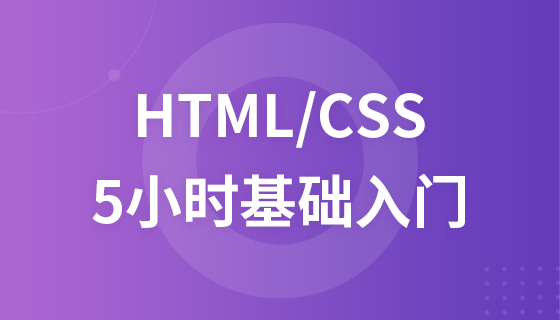一、css sprites简介
通常被意译为“CSS图像拼合”或“CSS贴图定位”。CSS Sprites并不是一门新技术,目前它已经在网页开发中发展得较为成熟,CSS Sprites并不是什么金科玉律,但在很多情况下,它有着一定的优势,最重要的是它可以减轻服务器的负载,提高网页加载速度。
CSS Sprites允许你将一个页面涉及到的所有零星图片都包含到一张大图中去,这样一来,当访问该页面时,载入的图片就不会像以前那样一幅一幅地慢慢显示出来了。对于当前网络流行的速度而言,不高于200KB的单张图片的所需载入时间基本是差不多的,所以无需顾忌这个问题。
加速的关键,不是降低质量,而是减少个数。传统切图讲究精细,图片规格越小越好,重量越小越好,其实规格大小无所谓,计算机统一都按byte计算。客户端每显示一张图片都会向服务器发送请求。所以,图片越多请求次数越多,造成延迟的可能性也就越大。
二、CSS Sprites 工作原理
CSS Sprites其实就是把网页中一些背景图片整合到一张图片文件中,在需要用到图片的时候,通过CSS属性background-image组合background-repeat, background-position等来实现。
通过调整background-position的数值,背景图片就能以不同的面貌出现在你眼前。其实图片整体面貌没有变,由于图片位置的改变,你看到只 该看到的而已。就好比手表上的日期,你今天看到是21,明天看到是22,是因为它的position往上跳了一格。所以你也大概了解到,CSS Sprites一般只能使用到固定大小的盒子(box)里,这样才能够遮挡住不应该看到的部分。
三、CSS Sprites优点
立即学习“前端免费学习笔记(深入)”;
1、利用CSS Sprites能很好地减少网页的http请求,从而大大的提高页面的性能,这也是CSS Sprites最大的优点,也是其被广泛传播和应用的主要原因;
2、CSS Sprites能减少图片的字节,曾经比较过多次3张图片合并成1张图片的字节总是小于这3张图片的字节总和。
3、解决了网页设计师在图片命名上的困扰,只需对一张集合的图片上命名就可以了,不需要对每一个小元素进行命名,从而提高了网页的制作效率。
4、更换风格方便,只需要在一张或少张图片上修改图片的颜色或样式,整个网页的风格就可以改变。维护起来更加方便。
四、CSS Sprites缺点
1、在图片合并的时候,你要把多张图片有序的合理的合并成一张图片,还要留好足够的空间,防止板块内出现不必要的背景;这些还好,最痛苦的是在宽屏,高分辨率的屏幕下的自适应页面,你的图片如果不够宽,很容易出现背景断裂;
2、至于可维护性,这是一般双刃剑。可能有人喜欢,有人不喜欢,因为每次的图片改动都得往这个图片删除或添加内容,显得稍微繁琐。而且算图片的位置(尤其是这种上千px的图)也是一件颇为不爽的事情。当然,在性能的口号下,这些都是可以克服的。
3、由于图片的位置需要固定为某个绝对数值,这就失去了诸如center之类的灵活性。
4、前面我们也提到了,必须限制盒子的大小才能使用CSS Sprites,否则可能会出现出现干扰图片的情况。这就是说,在一些需要非单向的平铺背景和需要网页缩放的情况下,CSS Sprites并不合适。YUI的解决方式是,加大图片之间的距离,这样可以保持有限度的缩放。
五、CSS Sprites图片切割术
1、CSS Sprites图片顺序合图片由上至下、左至右添加。而background-position一般采用数字组合形式定位,这样能减少维护带来的不必要麻烦。
2、不建议CSS Sprites图片中保持一定的间距,因为文件size增大而增加文件体积。
3、CSS Sprites图片中把颜色较近或相同的组合在一起可以降低颜色数,因为少色数的图片文件体积会相对的小。
4、size相同的CSS Sprites图片中留有较大空隙,某程度上多数情况会增大了体积,所以CSS Sprites的图片不要有空隙。
5、在size相同的CSS Sprites图片中,垂直排列的图片会比水平排列的文件体积要大。
6、在CSS Sprites图片中,水平排列的图片会比垂直排列的文件体积要大。
7、图片对等合并:应用CSS Sprites图片时,适当地把对等相同的图像合并,以节省空间及减少体积。
8、区分开不需要合并的图像:如当前用户确定只显示一种状态或一个级别时,不必要把其他的级别或状态的图片合并。
9、黄金切割位:在CSS Sprites图片的最右或左边为最灵活动位置最适宜摆放文本前的icon,因此不会受到其它CSS Sprites图片干预,也不需要预留一定的行宽。

HTML怎么学习?HTML怎么入门?HTML在哪学?HTML怎么学才快?不用担心,这里为大家提供了HTML速学教程(入门课程),有需要的小伙伴保存下载就能学习啦!




Copyright 2014-2025 https://www.php.cn/ All Rights Reserved | php.cn | 湘ICP备2023035733号